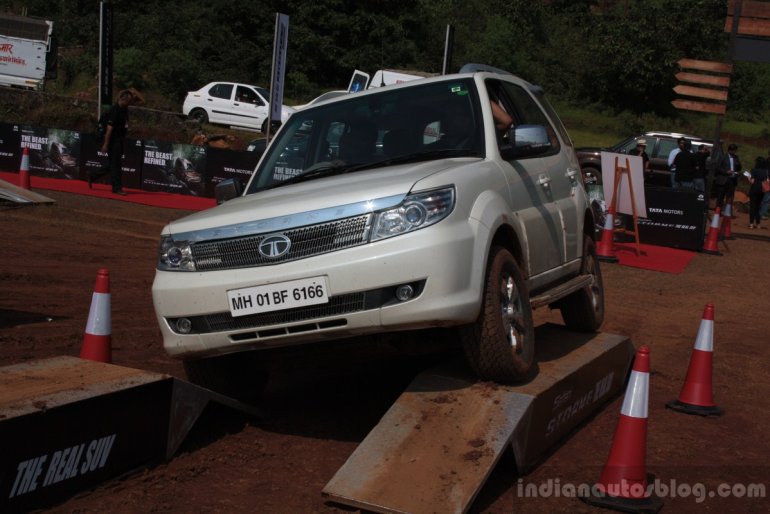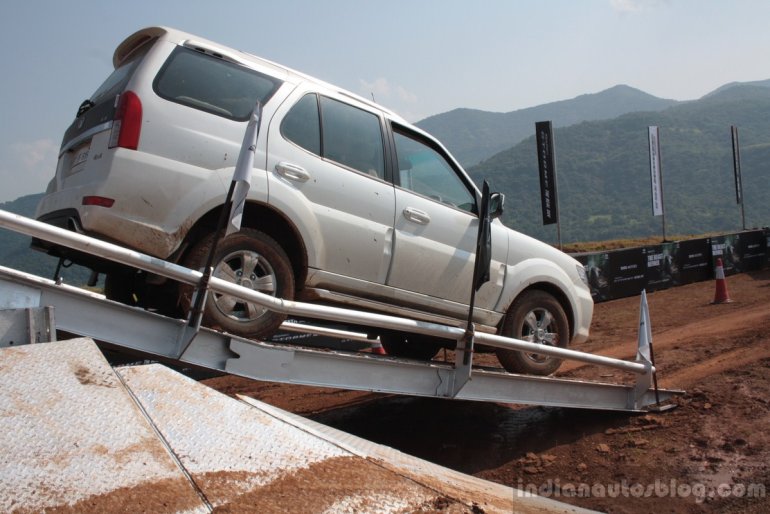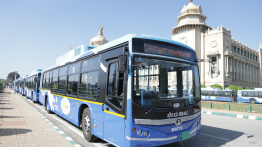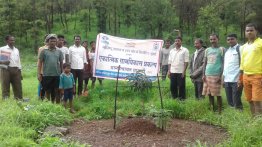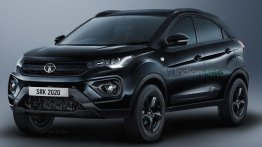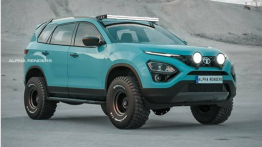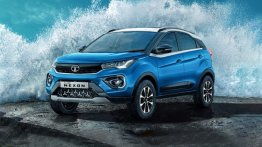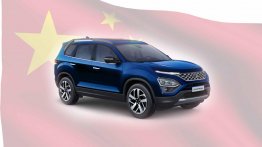Our test drive was arranged in a way to mainly demonstrate the Tata Safari Storme’s prowess off the road and that means we spent most of the time behind the wheel either tackling rough off road trail or carefully guiding the SUV through the test track that included the usual off road obstacles.
[Maneuvering the Safari Strome through the off road track was fun and surprisingly easy]
Our encounter with the Safari Storme started at the Lavasa city and we drove in a convoy towards an uphill off road track.
As luck would have it, I was assigned one of the only two 4x2 cars and I realized my disadvantage the moment the front wheels went off the road.
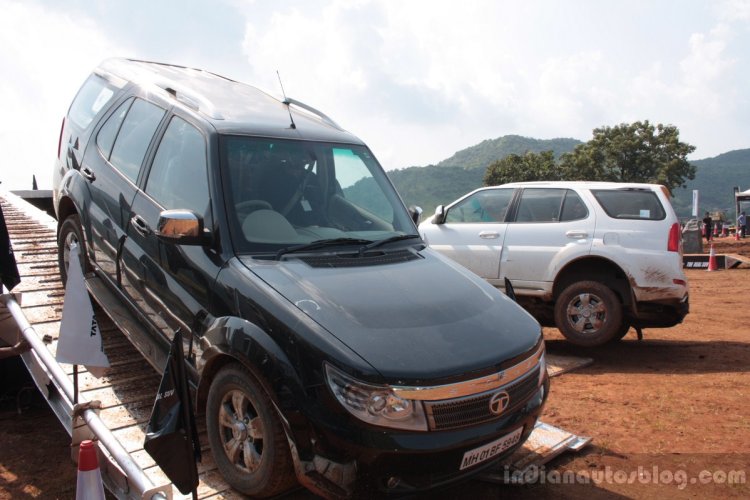
While others where ‘Storming’ up the hill with their 4x4s, I had to nurse the throttle pedal to avoid the wheel spins. Despite having the traction disadvantage, the 4x2 Safari Storme was not entirely overwhelmed by the terrain and we both gathered pace progressively.
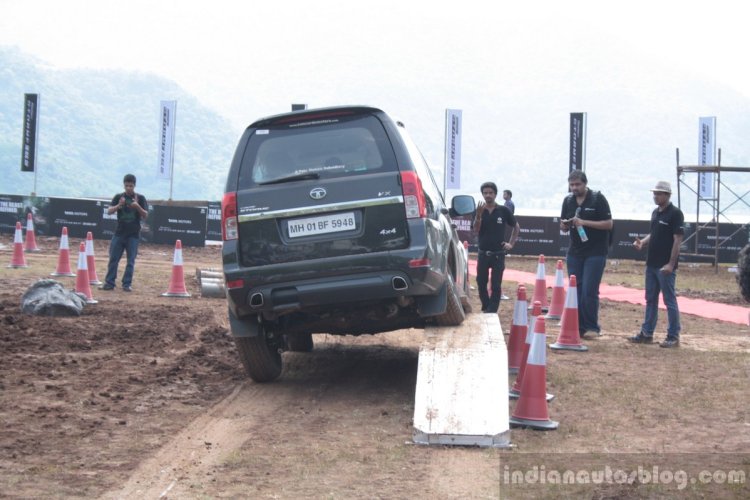
The 2.2 litre VARICOR diesel engine develops a similar 140 horses as its predecessor but Tata Motors claim that the low end torque has improved. As a proof, the SUV pulled rather well on the steep inclines and a dig of the right foot gets the wheel spinning and the tail swaying across the width of the trail.
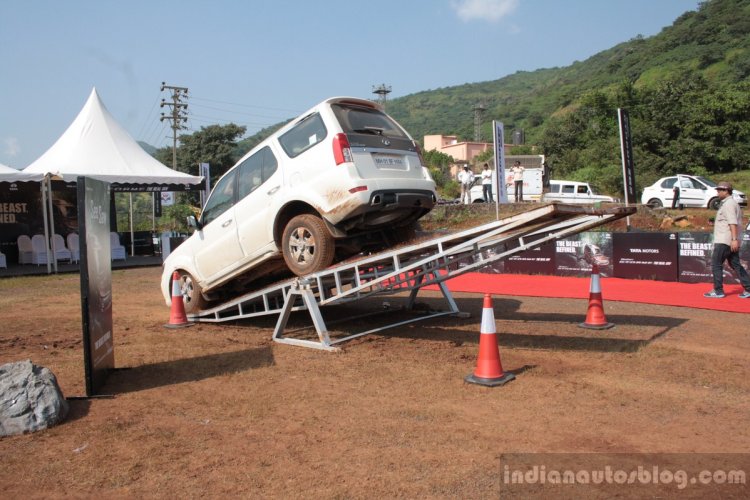
Through my front windshield and rear view mirror it was evident that the four wheel drive Safari Stormes didn’t have any of such problems and they climbed up the hill with composure. Guess what, it was not my two wheel drive car which got stuck and needed a tractor!
Driving downhill gave us opportunity to test the suspension. The double wishbone front and the five-link rear suspension setup handled what’s been thrown at them efficiently. The suspension makes noise only while rumbling over the sharpest of the bumps and the ride quality is still the Safari’s forte, as the occupants never reached a point where they were overly uncomfortable while the Safari Storme galloped down the hill with absolutely no tarmac under her Bridgestone tires.
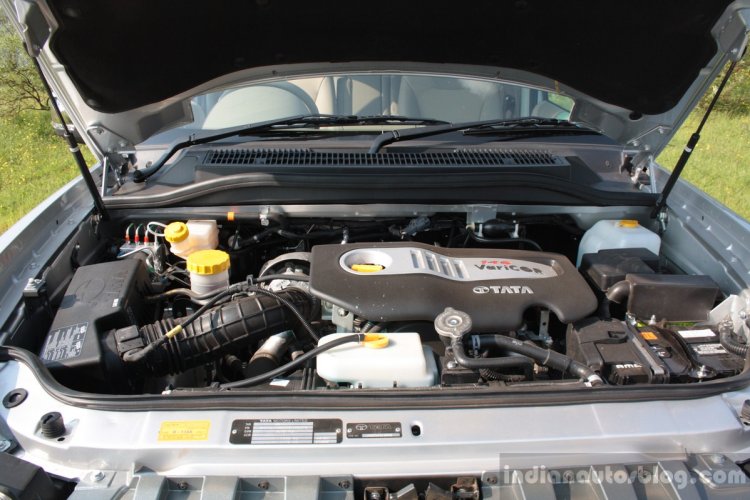
The rack and pinion steering was heavy and it struggled to centre itself off the road. The self centering was better on road but the weight of the steering stayed. Around the sharply winding roads, the steering gives decent feel but the body roll doesn’t encourage you to haul this big SUV around the corner. That said, the car grips the road rather well. We would’ve liked a slightly quicker steering ratio.

The Safari Strome is equipped with disc brakes on all the wheels and with that Tata has managed to eliminate one of the Safari’s severe shortcomings. The brakes are reassuring and have much better stopping power.
The adrenalin filled segment of the day came from the off road test track which highlighted Safari Storme’s go-anywhere potential. We were made to drive through steep inclines and declines, axle twisters, rumblers and even a see saw! Though these obstacles were laid out after careful consideration of the SUV’s design limits, the ease with which the Safari Storme handled them is to be commended.
The Safari Storme uses the Aria’s X2 platform which is manufactured by hydro-form technology. As a result, the Storme is a whopping 2.5 times stiffer than the old Safari and that while being lighter by around 75 kg! No wonder it handled the off road trail and the test track with aplomb. Lavasa’s twisty tarmac means we didn’t get a chance to test the highway stability and mannerism which is claimed to be improved.
All in all, the Tata Safari Strome comes around as a more mature package than before and we just hope that it will be not plagued by teething issues. The Storme looks ready to kick up a storm.
